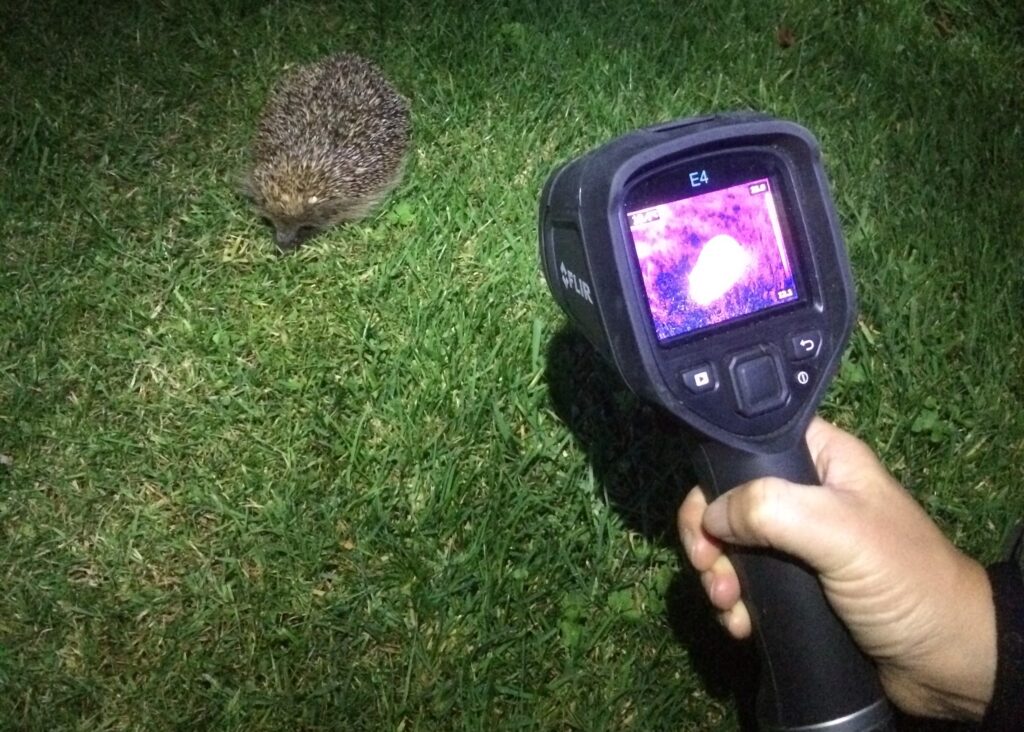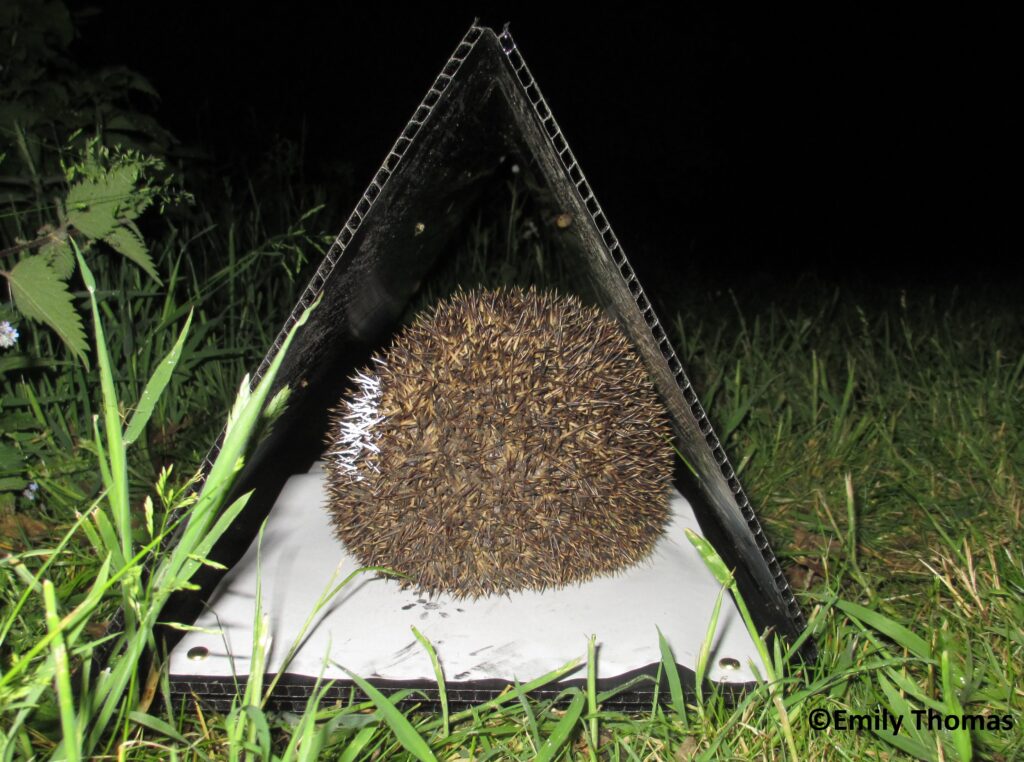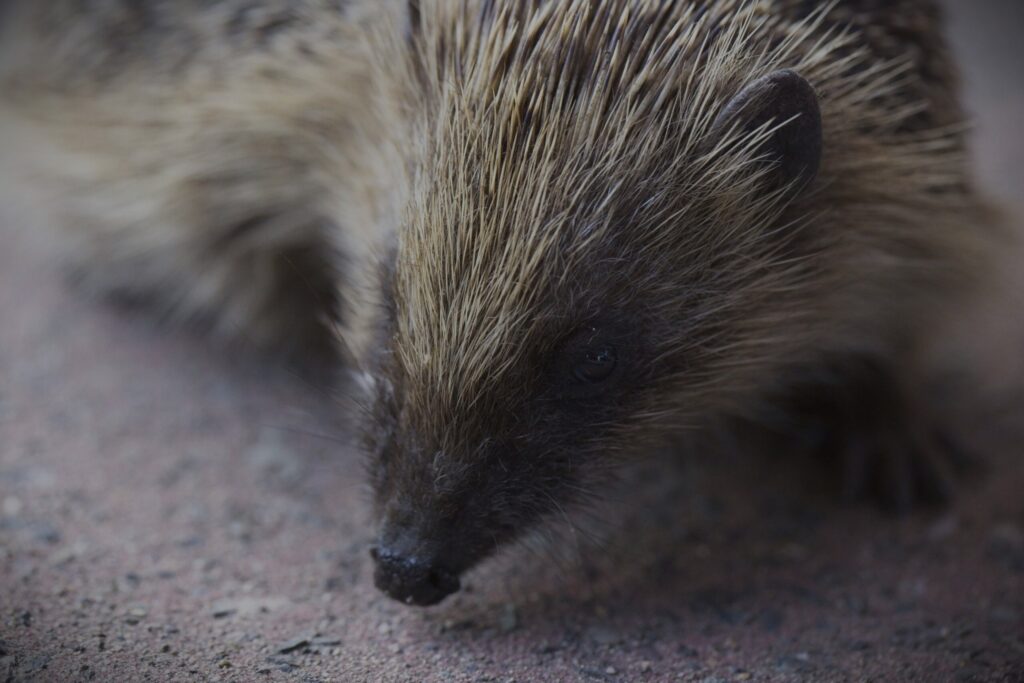Hedgehog Research – why do we do it and what are the rules?
Why is research needed?
Hedgehogs in Britain have undergone a long historic decline, but differences between urban and rural populations are increasingly apparent. The latest State of Britain’s Hedgehogs report, compiled by The British Hedgehog Preservation Society (BHPS) and People’s Trust for Endangered Species (PTES), demonstrates widespread losses with the steepest declines in rural areas and a possible stabilisation of urban populations.
Findings of research projects and surveys allow us to better understand hedgehog population dynamics, as well as potential conservation measures. Robust evidence is also vital when engaging with policy makers as we work to ensure that hedgehogs are considered in new legislation.
All research projects have to meet a series of demanding tests before they are allowed to be undertaken. There are legal requirements, along with ethical and practical considerations.

Legal
Hedgehogs are protected in England, Scotland and Wales, under the Wildlife and Countryside Act 1981, Schedule 6 and in Northern Ireland under the Wildlife (NI) Order 1985, Schedules 6&7.
Protected from being killed or taken by certain methods under Section 11(1) of the Wildlife and Countryside Act 1981. The methods listed are: self-locking snares, bows, crossbows, explosives (other than ammunition for a firearm), or live decoys. The species listed are also protected from the following activities: trap, snare or net, electrical device for killing or stunning, poisonous, poisoned or stupefying substances or any other gas or smoke, automatic or semi-automatic weapon, device for illuminating a target or sighting device for night shooting, artificial light, mirror or other dazzling device, sound recording, and mechanically propelled vehicle in immediate pursuit.
Licencing
Licences to undertake research come from statutory bodies; Natural England, Natural Resources Wales, NatureScot and the Northern Ireland Environment Agency.
A survey licence is required for work on hedgehogs if the animals are to be trapped or taken with the use of artificial light, such a torch or spotlight.
A survey licence is not required: for surveys of hedgehog field signs, for direct observation or for presence/absence surveys where they are observed or detected without ‘taking’ (such as trapping or handling) e.g. for the use of footprint tunnels, remote camera traps, or for habitat appraisal or general ecological survey purposes.

In addition to this, anyone applying sedatives to animals for research purposes must be a vet or licensed under the Animals (Scientific Procedures) Act 1986.
The Chartered Institute of Ecology and Environmental Management (CIEEM) has also put together a series of criteria they consider to be a minimum for research to be undertaken:
Research criteria
Knowledge
Individuals should have a knowledge and understanding of:
- Conservation status
- Distribution
- Threats to populations, species range (including introduced populations) and species survival
- hedgehog ecology, breeding biology and behaviour
- Known ecological requirements
- Legal protection
- Licensing and permissions
- Appropriate survey seasons
- Survey methods used to survey for hedgehogs (including trapping, marking/tagging, field searching and using footprint tunnels and camera traps) and the strengths, weaknesses and limitations of these methods
- Appropriate equipment, methods and licensing requirements for humane live-capture, handling and sedation of hedgehogs (if intending to use these techniques) and the legal issues surrounding potential by-catch
- Range of factors that might lead to bias in the survey results, and false negatives
- Sources of information on known occurrence and distribution of hedgehogs (including NBN Atlas, local biological/environmental records and local contacts)
- Metadata standards / data sharing
- Health and safety and welfare issues commonly associated with surveying for hedgehogs (including live- trapping and handling of wild animals if relevant).

Skills
Individuals should have skills and experience enabling them to confidently:
- Identify field signs for hedgehogs
- Assess habitat potential for hedgehogs
- Scope fieldwork appropriately
- Plan and implement sound scientific surveys (appreciating the effect of season and habitat on survey methods)
- Use relevant non-invasive survey methods for hedgehogs
- Analyse and interpret survey data
- Take appropriate health and safety precautions.
If trapping is used, individuals should also be able to:
- Deploy and monitor live traps effectively
- Legally and humanely handle live hedgehogs
- Effectively record biometric data from live hedgehogs
- Legally and humanely mark/tag hedgehogs (if using this technique)
- Correctly handle a range of potential by-catch from live-traps (with due regard to relevant legislation).
Much of this material was put together by Dr Richard Yarnell and Dr Nigel Reeve on behalf of the CIEEM.
In summary, the work that is commissioned by BHPS and PTES is required to meet the legal, practical and ethical demands above. Where there is evidence of the highest standards not being met, we would take immediate action to uncover what has gone wrong.
If you find a hedgehog that is in need of help and clearly marked and involved with research, please do contact the BHPS, after making sure the animal is safe and secure in a cardboard box (or similar) so that we can advise on the nearest rescue and also try to find out who is carrying out research in that area.
Without the work undertaken by researchers we will not be in a position to argue for better protection for hedgehogs. Research is crucial to furthering our understanding of the threats hedgehogs face and to formulating responses.

